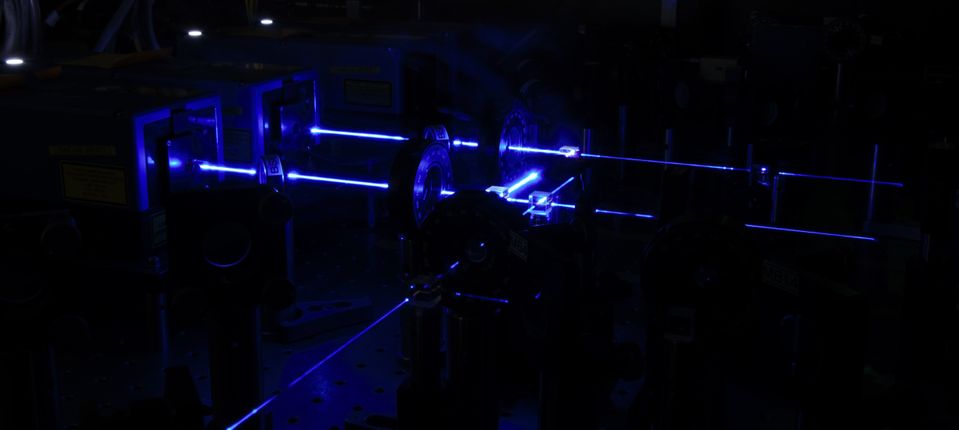Ion trapping, an innovative technique that allows the confinement of charged particles, has emerged as a cornerstone in various fields such as quantum computing, atomic physics, and precision measurement. At its essence, ion trapping involves the manipulation of ions using electric or magnetic fields, thereby providing a controlled environment in which these particles can be studied and utilized for intricate applications. The foundations of ion trapping date back to the late 20th century, yet its implications continue to expand dramatically, promising a profound shift in our understanding and technological capabilities.
The conceptual underpinning of ion trapping is rooted in the principles of electromagnetic fields. Ions, being charged particles, are influenced by electric and magnetic forces. By precisely arranging these fields, it is possible to craft a trap that constricts the motion of ions, rendering them stationary at a particular point in space. The most prominent methods of ion trapping include the Penning trap and the Paul trap, each employing distinct configurations of electromagnetic fields.
The Penning trap utilizes a combination of static electric and magnetic fields to confine ions. The magnetic field provides stability in the axial direction, while the electric field confines ions radially. This duality is crucial, allowing for the achievement of impressive levels of precision in manipulating individual ions. Conversely, the Paul trap employs an oscillating electric field, leading to a dynamically changing environment in which ions can be contained. This sophisticated interplay of forces nurtures an environment conducive to advanced experimental paradigms.
Beyond just containment, ion trapping serves as a vital tool for exploring the quantum properties of matter. Research has shown that trapped ions can exhibit quantum states that are fundamental to the development of quantum computing. In such systems, quantum bits, or qubits, are represented by the states of the ions. The ability to manipulate these states with exceptional precision forms the bedrock of potential quantum algorithms, which may one day revolutionize computing as we know it. The concept of superposition and entanglement, hallmarks of quantum mechanics, can be directly harnessed through ion trap technologies.
The applications extend further, bridging the realms of fundamental physics and applied technologies. In the field of metrology, ion traps are pivotal in achieving unprecedented precision in measurements. For instance, the frequency of atomic transitions can be determined with remarkable accuracy by studying trapped ions. This precision facilitates advancements in timekeeping and navigation technologies, enabling more accurate GPS systems and atomic clocks. Such innovations promise to enhance everything from telecommunications to space exploration.
Moreover, ion trapping frequently intersects with the burgeoning field of quantum information science. The exploration of entangled states among trapped ions opens new avenues for quantum communication. Quantum repeaters, which leverage the phenomena of entanglement, stand to augment long-distance communication, ensuring a future where secure transmission of information is intrinsically tied to the laws of quantum mechanics. This perspective not only fosters curiosity about the potential applications but also encourages a reevaluation of existing paradigms in information technology.
The by-products of ion trapping research also find relevance in the realm of materials science. By studying the behavior of ions in confinement, researchers gain insights into atomic-scale interactions that can inform the synthesis of novel materials. The applications range from the development of superconductors to the fabrication of materials with bespoke properties, underscoring the interconnectedness of ion trapping research with diverse scientific inquiries.
Nevertheless, the journey of ion trapping is fraught with challenges and complexities that demand meticulous attention. The precision required in the arrangement of electromagnetic fields necessitates advancements in engineering and technology. Moreover, maintaining an isolated environment free from external disturbances is paramount, as any perturbation can lead to decoherence, undermining the stability of the trapped ions. This call for sophistication in both experimental setups and theoretical frameworks invokes a continuous cycle of innovation, inviting physicists and engineers alike to rethink existing methodologies.
The ethical considerations stemming from advances in ion trapping technologies add another layer to this narrative. As the potential for quantum technologies expands, questions arise regarding privacy, security, and the implications of novel computational capabilities. Balancing progress with ethical responsibilities will be crucial, ensuring that advancements serve the collective good while mitigating inherent risks.
In conclusion, ion trapping exemplifies a vivid intersection of theory, practice, and ethical contemplation. As researchers delve deeper into the quantum realm through the lens of ion trapping, the promises of enhanced computational power, precision measurement, and novel material synthesis beckon an era defined by unprecedented possibilities. This nexus of inquiry not only piques curiosity among scholars and professionals but also draws attention to the broader implications of science as it continues to reshape our understanding of reality. The future of ion trapping beckons with the tantalizing prospect of unlocking secrets that lie at the heart of atomic and subatomic interactions, fostering an optimistic vision for the synthesis of scientific discoveries and universally relevant applications.












